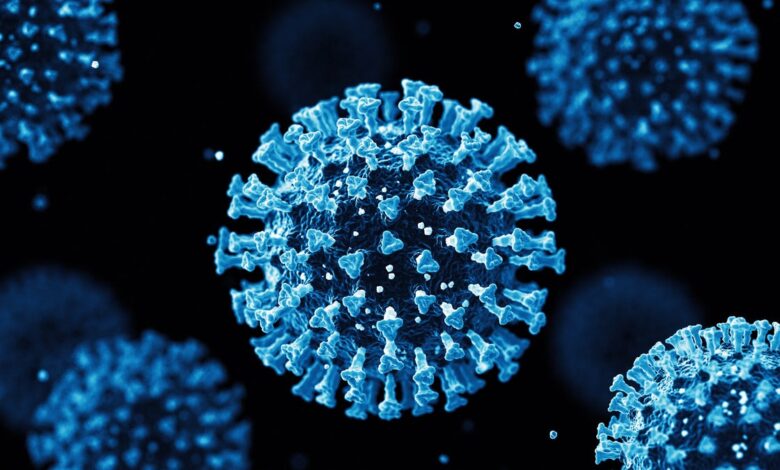What to know about symptoms, latest CDC data

[ad_1]
The CDC predicts that the KP.3 COVID-19 variant will ‘continue increasing.’

The world is the happiest it has been since COVID-19, new report shows
The world is experiencing its highest levels of happiness since the COVID-19 pandemic, according to Gallup’s Global Emotions Report for 2024.
unbranded – Lifestyle
The KP.3 COVID-19 variant is continuing to lead as the dominant variant, the newest Centers for Disease Control and Prevention (CDC) data shows.
For a two-week period starting on June 23 and ending on July 6, the CDC’s Nowcast data tracker showed the projections of the COVID-19 variants. The KP.3 variant accounted for 36.9% of positive infections followed by KP.2 at 24.4%.
“Estimates predict that KP.3 is the dominant SARS-CoV-2 variant making up 31.2 to 43% of viruses nationally. KP.3 is projected to continue increasing as proportions of the variants that cause COVID-19,” CDC Spokesperson, Rosa Norman, told USA TODAY in a statement. “KP.3 evolved from JN.1, which was the major viral lineage circulating since December 2023.”
The data also shows that the new variant LB.1 has fallen back 3% by accounting for 14.5% of cases but was previously at 17.5% of infections. JN.1, the previous ring leader since 2023, only had 1.0% of positive cases which is a 0.6% decrease from the previous two-week period.
On July 2, the CDC said that the COVID-19 infections are growing in 39 states, stable or uncertain in 10 states and declining in zero.
Here’s what you need to know about the KP.3 variant.
More COVID-19 News: Should you get the updated COVID-19 vaccine? See current guidelines from CDC.
What is the KP.3 variant?
Like JN.1 and “FLiRT” variants KP.1.1 and KP.2, KP.3 is a similar strain. Norman said that the KP.3 variant is, “a sublineage of the JN.1 lineage” which comes from the Omicron variant.
Symptoms of COVID-19
The CDC has not said if KP.3 has its own specific symptoms. Norman said the symptoms associated with KP.3 are similar to those from JN.1. However, the government agency outlines the basic symptoms of COVID-19 on its website. These symptoms can appear between two to 14 days after exposure to the virus and can range from mild to severe.
These are some of the symptoms of COVID-19:
- Fever or chills
- Cough
- Shortness of breath or difficulty breathing
- Fatigue
- Muscle or body aches
- Headache
- Loss of taste or smell
- Sore throat
- Congestion or runny nose
- Nausea or vomiting
- Diarrhea
The CDC said you should seek medical attention if you have the following symptoms:
- Trouble breathing
- Persistent pain or pressure in the chest
- New confusion
- Inability to wake or stay awake
- Pale, gray or blue-colored skin, lips, or nail beds
How can we protect ourselves from KP.3 and other variants?
The CDC recommends for everyone ages 6 months and older, with some exceptions, receive an updated 2024-2025 COVID-19 vaccine to protect against the disease, regardless whether or not you have previously been vaccinated against the virus.
CDC data shows the COVID-19 test positivity by state
CDC data shows which states has the lowest and highest COVID-19 positivity rates from June 29 to July 5, 2024.
Can’t see the map? Click here to view it.
Within the past week COVID-19 test positivity has risen 9%, the CDC data shows.
Changes in COVID-19 test positivity within a week
Based on data collected by the CDC it showed that five states had the biggest increase of 4.7% in positive COVID-19 cases from June 29 to July 5, 2024.
Here’s the list of states and their changes in COVID-19 positivity for the past week.
| State | Change in COVID-19 test positivity in (%) |
| Alabama | +2.6 |
| Alaska | +3.4 |
| Arizona | +2.1 |
| Arkansas | +4.7 |
| California | +2.1 |
| Colorado | +2.6 |
| Connecticut | +0.7 |
| Delaware | +2.3 |
| District of Columbia | +2.3 |
| Florida | +2.6 |
| Georgia | +2.6 |
| Hawaii | +2.1 |
| Idaho | +3.4 |
| Illinois | +2.9 |
| Indiana | +2.9 |
| Iowa | +2.3 |
| Kansas | +2.3 |
| Kentucky | +2.6 |
| Louisiana | +4.7 |
| Maine | +0.7 |
| Maryland | +2.3 |
| Massachusetts | +0.7 |
| Michigan | +2.9 |
| Minnesota | +2.9 |
| Mississippi | +2.6 |
| Missouri | +2.3 |
| Montana | +2.6 |
| Nebraska | +2.3 |
| Nevada | +2.1 |
| New Hampshire | +0.7 |
| New Jersey | +2.2 |
| New Mexico | +4.7 |
| New York | +2.2 |
| North Carolina | +2.6 |
| North Dakota | +2.6 |
| Ohio | +2.9 |
| Oklahoma | +4.7 |
| Oregon | +3.4 |
| Pennsylvania | +2.3 |
| Puerto Rico | +2.2 |
| Rhode Island | +0.7 |
| South Carolina | +2.6 |
| South Dakota | +1.5 |
| Tennessee | +2.6 |
| Texas | +4.7 |
| Utah | +2.6 |
| Vermont | +0.7 |
| Virginia | +2.3 |
| Washington | +3.4 |
| West Virginia | +2.3 |
| Wisconsin | +2.9 |
| Wyoming | +2.6 |
Ahjané Forbes is a reporter on the National Trending Team at USA TODAY. Ahjané covers breaking news, car recalls, crime, health, lottery and public policy stories. Email her at [email protected]. Follow her on Instagram, Threads and X (Twitter) @forbesfineest.
Contributing: Emily DeLetter
[ad_2]
Source link




